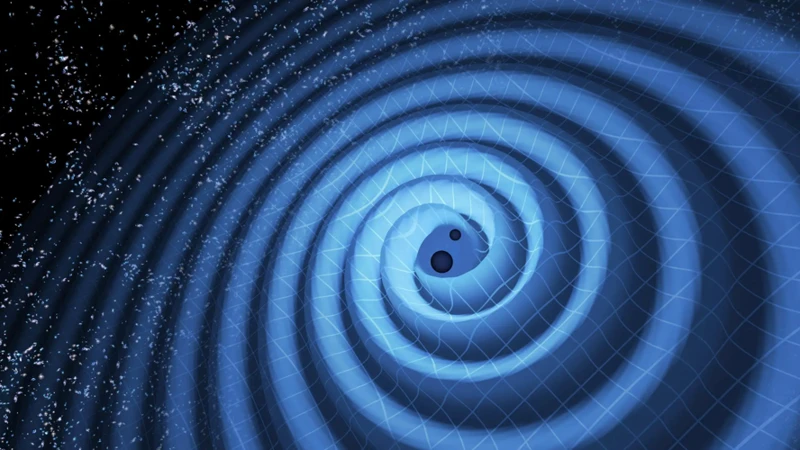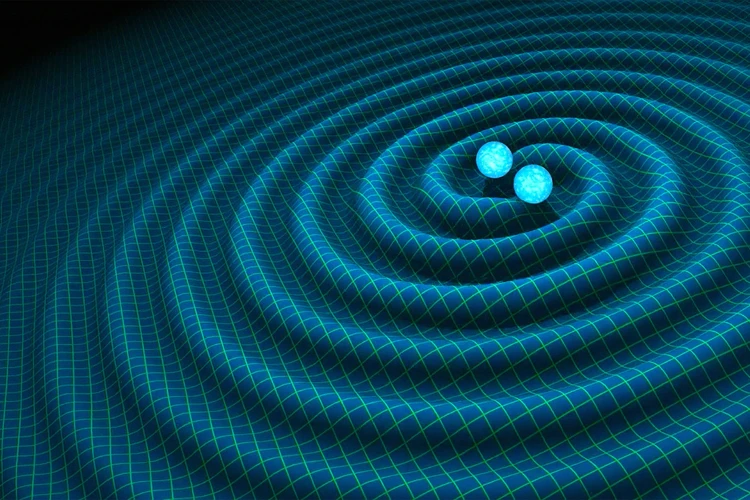Gravitational Waves: Ripples in the Fabric of Spacetime
Expanding our understanding of the universe and challenging long-held theories, gravitational waves have emerged as one of the most intriguing phenomena in modern physics. These elusive cosmic ripples, predicted by Einstein’s theory of general relativity, carry vital information about the universe’s most extreme events, such as the collision of black holes or the explosion of massive stars. This article delves into the captivating world of gravitational waves, exploring their nature, detection methods, and the profound implications they hold for our comprehension of the cosmos. Join us on an exhilarating journey as we unravel the mysteries of these ethereal waves and their impact on our understanding of the universe.
Contents
- What are Gravitational Waves?
- Detection of Gravitational Waves
- Implications and Significance
- Applications and Future Prospects
- Conclusion
-
Frequently Asked Questions
- How are gravitational waves different from electromagnetic waves?
- Can gravitational waves travel faster than the speed of light?
- How do scientists detect gravitational waves?
- What is the significance of detecting gravitational waves?
- Do gravitational waves affect Earth directly?
- Are there different types of gravitational waves?
- Can gravitational waves be used for communication?
- How can gravitational waves help us understand the early universe?
- Are there any foreseeable applications for gravitational wave research?
- Is there a connection between gravitational waves and the expansion of the universe?
- References
-
Frequently Asked Questions
- How were gravitational waves first predicted?
- What causes gravitational waves?
- How fast do gravitational waves travel?
- What is the significance of detecting gravitational waves?
- How do ground-based detectors detect gravitational waves?
- What are some challenges in detecting gravitational waves?
- What is the importance of space-based detectors?
- How do gravitational waves confirm the theory of general relativity?
- What are some potential applications of gravitational wave research?
- Are there any future missions or projects related to gravitational waves?
- References
- Read More
What are Gravitational Waves?

Gravitational waves, an enigmatic phenomenon, can be described as ripples in the fabric of spacetime itself. According to Einstein’s theory of general relativity, these waves are created by intense cosmic events, such as the collision of black holes or the explosive death of massive stars in supernovae. Unlike other waves, gravitational waves do not require a medium to propagate; they travel through the fabric of spacetime itself, carrying energy from their source. These waves cause the stretching and squeezing of spacetime as they pass through, creating a subtle but detectable distortion in the cosmic fabric. To put it simply, gravitational waves are the cosmic echoes that reveal the dynamic events and cataclysms occurring throughout the universe, allowing us to gain insights into the most extraordinary occurrences in the cosmos.
Theory of General Relativity
The Theory of General Relativity, formulated by Albert Einstein, revolutionized our understanding of gravity and laid the foundation for our comprehension of gravitational waves. According to this theory, gravity is not a force transmitted through space but rather a result of the curvature of spacetime caused by mass and energy. In other words, massive objects like stars and planets warp the fabric of spacetime, creating a gravitational field that influences the motion of other objects in its vicinity. Einstein’s theory suggests that these massive objects can also generate ripples in spacetime, known as gravitational waves when they undergo significant acceleration or change in momentum. These waves propagate outward from their source, carrying energy and information about the cosmic events that generated them. The Theory of General Relativity not only provides the framework for understanding the phenomena of gravitational waves but also predicts their existence years before they were directly detected. It stands as a testament to Einstein’s brilliance and our capacity to comprehend the intricate workings of the universe. For a broader understanding of the cosmos, you might be interested in exploring the fascinating world of supernovae explosions and their role in shaping the cosmos, which you can read more about here.
Properties of Gravitational Waves
Gravitational waves possess several distinctive properties that set them apart from other types of waves in the universe. One of their key characteristics is that they propagate at the speed of light, ensuring that any information carried by these waves reaches us almost instantaneously. These waves also have the ability to travel through space unimpeded, allowing them to pass through galaxies, nebulae, and even dense interstellar clouds without any notable interference. Another intriguing property of gravitational waves is their ability to interact very weakly with matter, making them nearly undetectable as they pass through the universe. This interaction becomes more pronounced as the wavelength of the waves decreases or as they encounter denser matter, causing a minuscule distortion in the space and time that can be measured by highly sensitive detectors. Finally, gravitational waves exhibit a unique polarization, meaning that the oscillation of spacetime occurs in a particular geometry. This polarization allows scientists to utilize multiple detectors to determine the direction and origin of the waves, providing valuable information about the cosmic events that generated them. Understanding these properties is crucial to the detection and analysis of gravitational waves, enabling scientists to uncover the secrets of the most cataclysmic events in the universe with precision and accuracy.
Detection of Gravitational Waves

Detection of gravitational waves is a tremendous scientific achievement that required the development of advanced technologies and precise measurement techniques. Two primary methods have been employed to detect these subtle ripples in spacetime: ground-based detectors and space-based detectors,. Ground-based detectors, such as the Laser Interferometer Gravitational-Wave Observatory (LIGO), consist of long, L-shaped interferometers with laser beams that measure tiny changes in the distance between mirrors caused by passing gravitational waves. The sophisticated technology and meticulous calibration of these detectors enable the detection of even minuscule distortions in spacetime. On the other hand, space-based detectors, like the Laser Interferometer Space Antenna (LISA), aim to detect lower-frequency gravitational waves that cannot be observed from Earth’s surface due to interference. These space-borne observatories, placed in orbit around the Sun, will allow us to expand our understanding of the universe and observe cosmic phenomena in a way that is not possible with ground-based detectors. With the advancement of detection techniques and the deployment of these cutting-edge devices, we are ushering in a new era of gravitational wave astronomy, unlocking the secrets of the universe and unraveling its captivating mysteries.
Ground-Based Detectors
Ground-based detectors play a crucial role in the detection of gravitational waves. These detectors utilize highly sensitive instruments to measure the minuscule distortions caused by passing gravitational waves. One of the most prominent examples of a ground-based detector is the Laser Interferometer Gravitational-Wave Observatory (LIGO). LIGO consists of twin facilities located in Hanford, Washington, and Livingston, Louisiana, with each facility housing a pair of perpendicular arms that are four kilometers in length. Inside these arms, laser beams are split and sent down separate paths, where they bounce off mirrors before recombining. When a gravitational wave passes through, it causes the arms to slightly contract and expand, thereby altering the distance that the laser beams travel. This change in distance is detected by the interferometer, enabling the identification of gravitational wave signals. The effectiveness of ground-based detectors like LIGO was remarkably demonstrated in 2015 when the observatory made its first direct detection of gravitational waves, originating from the merger of two black holes. With ongoing advancements and upgrades, including the upcoming LIGO-India project, ground-based detectors continue to push the boundaries of gravitational wave research, providing valuable insights into the cosmic phenomena occurring billions of light-years away.
Space-Based Detectors
Space-based detectors provide a unique vantage point for observing gravitational waves and offer advantages over ground-based detectors. The most notable space-based gravitational wave observatory to date is the Laser Interferometer Space Antenna (LISA) mission, led by the European Space Agency (ESA). LISA consists of three spacecraft positioned in an equilateral triangle formation, with laser beams traveling between them to precisely measure the distances. Unlike ground-based detectors, LISA is not affected by seismic noise or atmospheric disturbances, allowing for more accurate measurements of gravitational waves. Additionally, LISA can detect lower frequency waves, opening up new windows of exploration for astrophysical events such as the merger of supermassive black holes or the capture of compact objects by massive black holes. The mission is expected to be launched in the 2030s and will greatly enhance our understanding of the universe’s most extreme events. The space-based detectors, such as LISA, complement the ground-based detectors, further expanding our ability to study gravitational waves and explore the secrets of the cosmos.
Implications and Significance

The discovery and confirmation of gravitational waves have brought about profound implications and significance in the field of astrophysics and our understanding of the universe. Firstly, the detection of these waves provides strong evidence for the validity of Einstein’s theory of general relativity, which predicted their existence over a century ago. This confirmation not only solidifies our understanding of the fundamental laws governing the universe but also opens new doors for further exploration and advancements in physics. Additionally, gravitational waves allow us to observe and study cosmic events that were previously hidden from our view. These waves provide a unique window into powerful phenomena such as black hole mergers, neutron star collisions, and supernovae explosions that shape the cosmos. Through the study of gravitational waves, we can deepen our understanding of the universe’s most extreme events, unraveling the mysteries of the cosmos and expanding our knowledge of the vast celestial expanse.
Confirmation of General Relativity
Confirmation of General Relativity
The detection of gravitational waves has provided a remarkable confirmation of Einstein’s theory of general relativity. This groundbreaking discovery has offered concrete evidence of the existence of these elusive waves, as predicted by Einstein over a century ago. By studying the properties of gravitational waves, scientists have been able to verify the fundamental principles outlined in general relativity, such as the bending of spacetime in the presence of mass and energy. The observation of gravitational waves from astronomical events, such as the merger of black holes, has demonstrated the remarkable accuracy and validity of Einstein’s theory in describing the behavior of gravity on a cosmic scale. This confirmation not only validates the intellectual genius of Einstein but also inspires confidence in the robustness of our current understanding of the fundamental forces governing the universe. It opens up new avenues of exploration and further deepens our comprehension of the cosmos, solidifying general relativity as a cornerstone of modern physics. To learn more about other ancient cosmological beliefs, you can explore the fascinating world of Aztec cosmology and the afterlife.
Exploring the Cosmos
The discovery of gravitational waves has opened up a whole new realm of possibilities for exploring the cosmos. By studying these elusive waves, scientists gain invaluable insights into the most violent and cataclysmic events in the universe. Gravitational waves allow us to probe deep into the heart of phenomenon such as black hole mergers, neutron star collisions, and even the birth of the universe itself. These waves act as messengers, bringing us information about events that occurred billions of years ago. By deciphering the signals embedded within the gravitational waves, astronomers can unlock secrets about the origins, evolution, and composition of celestial objects. This knowledge not only expands our understanding of the cosmos but also helps us refine and validate existing theories in astronomy and astrophysics. Exploring the cosmos through gravitational waves allows us to confirm or challenge existing models and establish new ones to better comprehend the workings of our vast universe. The pursuit of knowledge from these cosmic ripples propels us on a profound journey of exploration, where each new discovery brings us closer to unraveling the mysteries of the cosmos.
Applications and Future Prospects

Given the groundbreaking discoveries and advancements facilitated by the detection of gravitational waves, the field of gravitational wave astronomy is flourishing with potential applications and future prospects. One of the key areas where gravitational waves have immense significance is in understanding the evolution and dynamics of black holes. By studying the gravitational waves emitted during black hole mergers, scientists can gain insights into the formation and growth of these enigmatic cosmic entities, shedding light on their elusive nature. Additionally, gravitational waves provide a unique tool for probing the fundamental properties of matter and gravity, offering a window into the mysteries of quantum gravity and the nature of spacetime itself.
Another exciting application of gravitational wave research lies in cosmology. By observing the properties of gravitational waves from the early universe, scientists can learn more about the conditions and processes that shaped the cosmos in its infancy. This, in turn, contributes to our understanding of the universe’s origin, the interplay between dark matter and dark energy, and the dynamics of cosmic inflation. The data gathered from gravitational wave observations will provide valuable insights into the fundamental structure and evolution of the universe.
Looking towards the future, the development and refinement of gravitational wave detectors opens up new possibilities for scientific exploration. With advancements in technology and data analysis techniques, scientists anticipate detecting a wider range of gravitational wave sources, including weaker signals from events occurring further in the distant cosmos. This will allow for a more comprehensive understanding of the universe and its inhabitants.
The utilization of gravitational waves in multi-messenger astronomy presents exciting prospects. By combining observations from gravitational wave detectors with other telescopes and instruments, scientists can gain a more complete picture of celestial events. For example, the simultaneous detection of gravitational waves and electromagnetic signals can provide crucial information about the nature of gamma-ray bursts, neutron star mergers, and other energetic phenomena. This interdisciplinary approach allows for a deeper understanding of the universe and its complex interactions.
The applications and future prospects of gravitational wave research are vast and awe-inspiring. From unraveling the mysteries of black holes and exploring the early universe, to advancing our knowledge of fundamental physics and expanding our understanding of the cosmos, gravitational waves have opened up a new era of discovery and exploration. As technology continues to advance and our capabilities to detect and study these cosmic ripples improve, we can anticipate even more profound insights into the workings of the universe. Exciting times lie ahead for the field of gravitational wave astronomy, and the possibilities for new discoveries are seemingly limitless.
Conclusion

In conclusion, the discovery and study of gravitational waves have revolutionized our understanding of the universe. These cosmic ripples, predicted by Einstein’s theory of general relativity, have provided us with valuable insights into the nature of space, time, and the most extreme events occurring throughout the cosmos. The detection of gravitational waves not only confirmed the validity of Einstein’s theory but also opened up a new window through which we can explore the universe. By observing the universe through gravitational waves, astronomers and physicists can now investigate cosmic phenomena that were previously hidden from our view. Furthermore, the implications of this groundbreaking discovery are vast. Gravitational wave astronomy allows us to study black holes, neutron stars, and other celestial bodies in ways that were unimaginable before. Moreover, it has the potential to unravel mysteries surrounding the formation of the universe itself. As we continue to develop new technologies and expand our knowledge, the future of gravitational wave research is promising. By harnessing the power of these cosmic ripples, we are on the brink of unlocking even more secrets of the universe and deepening our understanding of its origins and evolution. In the grand tapestry of astrophysics, gravitational waves have become a vital thread, guiding us toward new horizons of discovery and expanding our interconnected knowledge of the cosmos.
Frequently Asked Questions

How are gravitational waves different from electromagnetic waves?
Gravitational waves and electromagnetic waves are distinct phenomena. While electromagnetic waves are disturbances in electric and magnetic fields that can travel through a vacuum or a medium, gravitational waves are ripples in the fabric of spacetime itself, caused by massive cosmic events.
Can gravitational waves travel faster than the speed of light?
No, according to the theory of general relativity, gravitational waves travel at the speed of light and cannot exceed or be slower than this cosmic speed limit.
How do scientists detect gravitational waves?
Scientists detect gravitational waves using sensitive detectors such as interferometers, which measure tiny changes in the relative distances of laser beams. These detectors can pick up the minuscule distortions caused by passing gravitational waves.
What is the significance of detecting gravitational waves?
The detection of gravitational waves confirms the existence of these elusive phenomena predicted by Einstein’s theory of general relativity. It opens up a new window for observing and understanding the universe, enabling us to study extreme cosmic events and phenomena that were previously hidden from our view.
Do gravitational waves affect Earth directly?
Gravitational waves do pass through the Earth, but their effects are incredibly minuscule. The distortions caused by gravitational waves are so tiny that they hardly disrupt our daily lives.
Are there different types of gravitational waves?
Gravitational waves can be categorized into different types based on their source and frequency. There are continuous waves, created by rotating asymmetric objects, and transient waves, generated by sudden cosmic events like black hole mergers or supernovae explosions.
Can gravitational waves be used for communication?
Gravitational waves, as of now, are not practical for communication purposes. The detectable gravitational waves we’ve observed are incredibly faint, and the methods used to detect them are not suitable for encoding and transmitting information.
How can gravitational waves help us understand the early universe?
Gravitational waves carry information about the most extreme events in the universe, such as the birth of black holes or the moments after the Big Bang. By studying these waves, scientists can gain insights into the early stages of the universe and test theories about its formation and evolution.
Are there any foreseeable applications for gravitational wave research?
Gravitational wave research has the potential for various applications. It could help develop new technologies in precision measurement, navigation systems, and even provide a unique way to observe neutron stars and other cosmic objects that are not easily detectable through other methods.
Is there a connection between gravitational waves and the expansion of the universe?
Gravitational waves and the expansion of the universe are connected indirectly. While gravitational waves themselves do not cause the expansion, the events that generate gravitational waves, such as the collision of massive objects, can contribute to our understanding of the expansion and acceleration of the universe.
References
Frequently Asked Questions

How were gravitational waves first predicted?
Gravitational waves were first predicted by Albert Einstein in 1916 as a consequence of his theory of general relativity.
What causes gravitational waves?
Gravitational waves are caused by the acceleration or movement of massive objects, such as colliding black holes or supernovae.
How fast do gravitational waves travel?
Gravitational waves travel at the speed of light, which is approximately 299,792 kilometers per second.
What is the significance of detecting gravitational waves?
Detecting gravitational waves confirms the existence of black holes, validates Einstein’s theory, and opens up new possibilities for exploring the universe.
How do ground-based detectors detect gravitational waves?
Ground-based detectors, such as LIGO and VIRGO, use interferometry to detect minuscule changes in the length of two perpendicular arms caused by gravitational waves.
What are some challenges in detecting gravitational waves?
Detecting gravitational waves is challenging because they have extremely small effects on spacetime and are easily masked by noise or other sources of interference.
What is the importance of space-based detectors?
Space-based detectors, such as LISA, can detect gravitational waves with lower frequencies and longer wavelengths than ground-based detectors, providing a different perspective on the universe.
How do gravitational waves confirm the theory of general relativity?
Gravitational waves provide strong evidence for the theory of general relativity by matching its predictions about the nature and behavior of spacetime.
What are some potential applications of gravitational wave research?
Gravitational wave research has the potential to improve our understanding of the early universe, guide the development of new technologies, and help us explore the mysteries of dark matter and dark energy.
Yes, there are ongoing projects and planned missions, such as the Einstein Telescope and the Laser Interferometer Space Antenna (LISA), that aim to further advance our knowledge and detection capabilities of gravitational waves.
References
- Gravitational waves, Einstein’s ripples in spacetime …
- Scientists have finally ‘heard’ the chorus of gravitational …
- Gravitational waves are ripples in the structure of …







